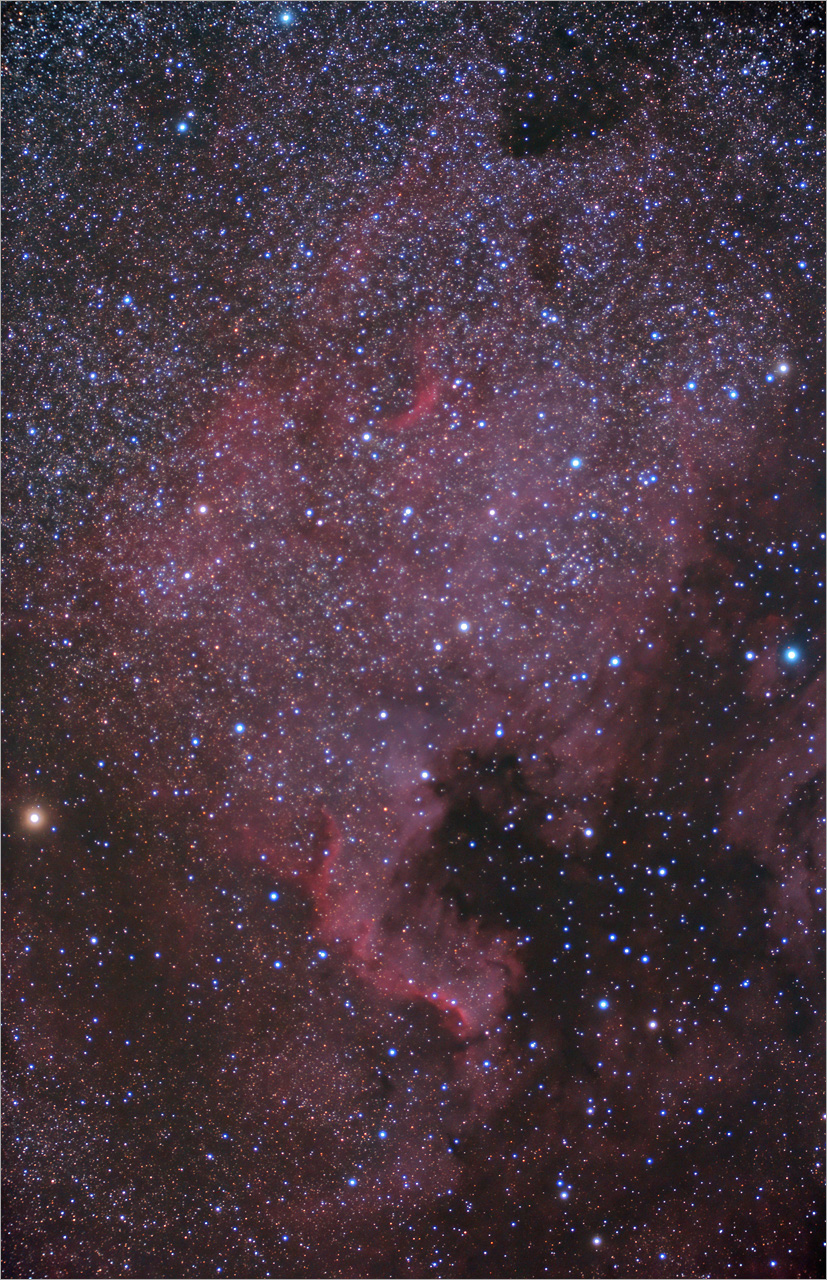
Deep-Sky Filter
The North America Nebula
Many people think that it is nearly impossible to shoot red emission nebulas with a stock DSLR camera because of the built-in filter that blocks most of the long red wavelengths.
This idea is wrong however, as this photo demonstrates.
The filter does block much of the red light of hydrogen-alpha emissions, but not all of it. Shooting these red nebulas just requires dark skies and long total exposure.
Using a light pollution filter also helps tremendously by blocking unwanted wavelengths and allowing longer exposures to record more hydrogen-alpha light.
|
|
NGC 7000 is the North America Nebula.
It gets its name from its resemblance to the continent of North America.
This rich region of emission and dark nebulas is located in Cygnus, just east of the bright star Deneb. The "Gulf of Mexico" region of the North American Nebula surrounds the dark nebula LDN 935. A smaller dark nebula, B352, is at the top right of the frame. The dark nebulas obscuring the stars in the background are located between us and the nebula.
The North America nebula gets its distinctive red color from the emission of light by ionized hydrogen gas excited by hot young stars that formed from the dust and gas in the nebula.
Covering an apparent area of 2 x 3 degrees on the sky, the North America Nebula lies at a distance of about 1,500 light years away. Its real size is about 50 light years across.
The bright golden star on the left of the frame is Xi Cygni, shining at magnitude 3.7. The bright blue-white star on the right side of the frame is 57 Cygni, shining at magnitude 4.76.
Several star clusters are embedded in the North America nebula. Cr428 is on the left side of the nebula, and NGC 6997 is on the right side.
Image Data
- Lens / Scope: Stellarvue SV70ED ED doublet refractor
- Focal Length: 336mm
- F/stop: f/4.8 with William Optics 0.8x Telecompressor / Reducer
- Exposure: Stack of twenty-two 3-minute exposures (66 minutes total exposure)
- 6 x 3min with Lumicon Deep-Sky Filter
- 16 x 3min with no filter
- Mount: Orion Sirius polar-aligned German-equatorial mount
- Guiding: None
- Camera: Unmodified Canon EOS 1000D (Digital Rebel XS)
- Mode: Raw
- ISO: 1600
- White Balance: Custom, set on sky background
- In-Camera Noise Reduction: Off
- Filter: 16 frames with no filter, 6 frames with the Lumicon Deep-Sky filter
- Temp: 52F
- Start Time: 1:24 a.m.
- Date: May 22, 2009
- Location: Maxwell, NJ
- Calibration: Master Dark and Master Bias
- Processing: Calibrated and Stacked in Images Plus. Contrast, color adjustments, enhancements in post processing in Photoshop.